
Food galore to tickle any palette
Story by Elaine Hobson Miller
Photos by Susan Wall
Submitted photos
From barbecue to sushi, fish to chicken Alfredo, St. Clair caterers can do just about all the wedding food a bride dreams about. Whether you’re having a casual barn wedding or a formal church ceremony, a grand gala with 300 people to feed or a small, intimate affair with family and close friends, someone in St. Clair County can make your dinner or reception an event folks will be talking about for years.
Caterers around St. Clair share common reasons for what they do. Most of them got into the business because they like to cook, and doing weddings gives them warm, fuzzy feelings of being part of a happy celebration.
“I like taking stress away from the bride and groom, letting them enjoy their special day,” said Craig Frickey, co-owner with wife Michelle at Sammie’s Touch N’ Go Catering in Pell City. “I like seeing kids who grew up coming to my restaurant, and now I do their weddings. That does make me feel kinda old, though.”
The Frickeys opened Sammie’s in 2000 in a log cabin overlooking the county airport. Soon people started asking about catering their special events. What began as a side business took off, and four years ago they closed the restaurant to the public and began catering full time, both on site and at other venues. Meanwhile, they purchased J & S Country Store & Deli in Pell City, which is why you’ll find their Sammie’s catering brochure there.
“Michelle and I are a team,” said Craig. “I decorate the plates, and she, the rest of the place. We do a lot of weddings. So far this year (early May), we’ve probably done six or seven and have that many more scheduled.”
He always talks to the bride and bridegroom, telling them it’s their day, and they can have whatever they want in the way of food. “Whether they prefer finger foods or a sit-down meal usually depends on the time of day,” Craig said. “We want it to be about them, let them make the decision, then just show up and have a good time.”
A popular trend is to have several food stations at the reception, each featuring a different item. One might be a roast beef carving, another pasta, a potato bar and even a grits bar. “Shrimp and grits is one of my most requested items,” Craig said. “I put lots of butter, heavy cream and andouille sausage in it, and I do sautéed shrimp on top and a basil cream sauce. Two things that never change are shrimp and grits and bread pudding.” Frickey said his company is a full-service caterer, from table linens to liquor, but he doesn’t make wedding cakes.
Like most caterers, however, Craig and Michelle can whip up just about any main dish requested. “I had some lady who wanted an Indian dish,” Craig said. “I said, ‘You get me a recipe, and I can make it.’ I did and they loved it.”
Like the Frickeys, Polly Warren can work from just about any recipe. She has been catering more than 30 years out of the KFC Pell City location her family has owned for 46 years. “When my kids were in school, they asked us to cater during football seasons,” she said. “I said, ‘Let’s do steak, baked potato and salad.’ So we did that for 200-300 people. Then folks started saying, ‘Oh, you can do teas, weddings, birthdays.’ Word spread, and they continue to call me.”
She does just a few weddings each year, every one with a different menu. “We don’t do cakes, though,” she said. Polly caters all the CEPA events that have hors d’oeuvres or meals and has catered the Pell City Rotary every Tuesday for 10 years. She does private events, Boy Scout dinners, the annual Pell City Mayor’s Breakfast and just about anyone else who calls. She has done weddings with 350 guests, but her largest civic assignment was for 600. Her smallest group was 20.
“I love to cook and to serve people,” Polly said. “It makes me feel good when they like my food. I think I was born for cooking,” said the native of Greece. “I learned a lot of Southern cooking from my mother-in-law, who was from Georgia. I make Greek foods, too. I may change a recipe and do it my way, but it works. I’ve had no complaints.”
Wade Reich, owner and operator of Butts To Go on Martin Street North in Pell City, operates out of the Pell City Texaco station. But don’t let the location fool you. He’s been featured in USA Today, Southern Living and other publications that have reached internationally.
He does seven or eight weddings a year in Birmingham as well as St. Clair County, and claims, with tongue just lightly planted in his cheek, that he has been catering since he was five years old.
“I grew up with the family hotel business in Gadsden and Birmingham,” he said. “When I was five, my parents let me put the peas on the plates for a Kiwanis dinner.” In 1974, his family opened Pappos in the old Printup Hotel in Gadsden, and he worked in the kitchen there.
“We bought this place (the service station) in ’08 and started catering in ’09,” Reich said. “The food business allows us to be in the gas business.” Many of the weddings he does lean toward smoked meats, but he isn’t limited to those. “We did one at Applewood Farms with grilled pork chops and chicken Alfredo,” Craig said. “The bride wanted the chicken for the younger kids. The rehearsal dinner the night before featured barbecue.” He does steaks, too, but not wedding cakes.
Overnight, he can cook enough meat to serve 6,000 people, but the largest group he has catered was 10,000, if you count his family hotel business days. From Butts To Go, he has catered as many as 450 and as few as one. “We cater to everyone who walks through our doors,” he said.
Kat Tucker is one of the few caterers in St. Clair County who also bakes cakes. She can customize foods or cakes to suit the tastes of just about any bride and bridegroom, including unusual requests like those of her own daughter.
“She doesn’t like cake, but she loves lasagna,” Tucker said. “So, I made lasagna in the shape of a wedding cake.”
Tucker has been catering out of The Kitchen in Pell City for 18 years because she loves to cook and loves making people happy. “That’s my goal, to make the bride and bridegroom happy and make sure their guests have a very enjoyable event,” Tucker said. “A wedding is a time for celebration. If something is not quite right with the food, that’s what they’ll remember. We make sure it’s great.”
Nine out of 10 times, the wedding couple doesn’t have time to enjoy the food, whether it’s served as a sit-down dinner, buffet-style or consists of appetizers only, according to Tucker. So, she always makes a care package for them carry out. “They can eat it in the airport while waiting to catch a plane or put it in their freezer for after the honeymoon,” she said. Tucker sometimes keeps leftover portions of the wedding cake in her own freezer until the couple asks for it.
“I have shipped cakes as far as Florida,” she said. “I carried one to Missouri when I did my nephew’s wedding out there.”
Mandy Camp, of Bowling’s Barbecue/The Complete Catering Company in Odenville, has been catering for more than 10 years. She can feed from 50 to 500 people, providing linens and centerpieces as well. She loves doing weddings, but also caters several civic events and a local Christian school. “People knew we would deliver orders from the restaurant and go set up, so they began asking about weddings,” she said.
She loves weddings because she gets to be part of a couple’s special day. As of May 1, she had catered 10-12 weddings this year and had one or two a month booked through December. “I have a Facebook page, but I don’t really promote my catering business,” Mandy said. “All publicity is by word of mouth or people attending a wedding and seeing what I do.” Popular wedding foods include panko chicken, meatballs, pulled pork and pulled chicken. Most brides prefer the food to be served buffet style. Sometimes those buffets will include Mandy’s green bean bundles (see Discover’s December 2016 Shopping & Dining St. Clair for recipe) and mashed potato bars or stations.
“I don’t do cakes, but if someone asks for a wedding cake, I have a couple of people I can call,” she said. “I used to do them, but since I had a child, I don’t have the patience.” Her mother, Sonja Bowling, is a big part of the catering business, and several good friends and close family members help, too.
MainStreet Drugs in Pell City and Odenville Drugs call Mandy when they have events, she said. “We have provided food for the Gideons every month for eight years, we do catering for Moody High School athletics, the MHS prom this year, civic events, school events and some churches.”
Lisa Vourvas at Two Sisters, a homestyle restaurant on U.S. 231 in Ashville, does a few weddings a year, preparing whatever the bride and bridegroom desire. Although her sister, Betty Cox, works with her, Lisa is the owner.
She has been catering since she opened in 2010. Most of it is for civic and community events, like the Shoal Creek Fire Department’s annual dinner for volunteer firefighters and their spouses. The largest number she has fed is 240 at the WMU fashion show at First Baptist Church of Ashville, while the smallest was a local wedding for 20 people, where the menu featured fish. “We did about 30 at the Ashville High School Class of 1948’s reunion,” Lisa said. “The firefighters want country-fried steak and peach cobbler every year.”
The primary chef for Two Sisters, Lisa grew up cooking for three younger sisters.Her most popular catered items are chicken salad and macaroni and cheese, which she also serves in the restaurant. She has a secret ingredient in the chicken salad that she refuses to reveal, although many customers have asked. “It gives the chicken salad flavor but you can’t taste the ingredient itself,” Lisa said.
Karen Stanfield handles the catering side of Local Joe’s Trading Post, near the St. Clair/Etowah county line on Rainbow Drive. “Because we have the use of the kitchens at both restaurants (the other is in Alexandria), it is not unusual for us to have three or four weddings or large catering events per weekend,” said Karen, who owns the restaurants with her husband, Jodie. “Our highly experienced catering staff loves what they do, and it shows each and every time they serve.”
In addition to weddings, Local Joe’s has catered four large community events over the past few years, including The Mayor’s Ball in Gadsden (to benefit the Boys and Girls Clubs of America), The Mardi Gras Magic Party (Family Success Center in Gadsden), The Paws for St. Paddy’s (Etowah County Humane Society Pet Rescue & Adoption Center), and The Girlfriend Gala (Success by Six program in coordination with Dolly Parton’s Imagination Library). The latter event was for 600 people this year.
The highest number of wedding guests Local Joe’s has catered was 465 people at a family farm, the smallest probably 25-30 at a private home. “The farm wedding had a fun menu primarily of desserts,” Karen said. “They also had some trays of mini croissants with chicken salad and pimento cheese, as well as some mini sliders for people who needed to have something with not so much sugar. There was a coffee bar because the couple loves their coffee.”
Local Joe’s has culinary-trained chefs who will make any cuisine a client wants, from Spanish to Cajun. The most popular catered meats are brisket, smoked turkey, pulled pork, chicken, ham, ribs, sausage and bacon-wrapped smoked shrimp. “Chefs Nathan and Damon make many delicious hors d’oeuvres, as well as some beautiful anti-pasta platters, fruit platters and vegetable platters,” said Karen. Despite the presence of a bakery at Local Joe’s, Karen refers brides to a couple of local specialists for the wedding cake.
She may not be on Local Joe’s referral list, but Lorraine Smith of Steele makes cakes. Operating as Edibles by Lorraine out of the commercial kitchen in her own home, she also bakes cakes for birthdays and other celebrations. She has even been known to donate a few for charitable events.
“I did around 40-45 weddings last year,” Lorraine said. “I also do birthday cakes between weddings. I’ve been doing this for almost 40 years. It’s a specialized business. I get to do something special for someone and that brings me joy.”
Lorraine got her training at Jerri’s Bakery in Rainbow City, which was owned by her husband’s aunt and uncle. “His aunt opened up a shop for people to buy baking and cake decorating supplies, and from there, people wanted cakes,” Lorraine said. “I managed her place for 13 years.”
Every cake is different, but she does a lot of Auburn and Alabama-themed cakes, which usually take on the personality of the bridegroom. Aubie or Big Al might be wearing golfing attire, camouflage or motorcycle boots. “These are always the fun cakes,” Lorraine said. “The bride’s cake is more elegant.”
One of her most challenging cakes involved a woman who loved old books, old papers and typewriters. She wanted antique handwriting on her cake. “I have a printer that makes edible type, so I printed off the letters and pressed them to the side of the cake,” Lorraine said. “Her aunt had made flowers out of pages of a book.”
Lorraine sets up tastings, where the bride and bridegroom choose flavors from her list. then sit around a table and taste the cakes and discuss their theme. “We try to make their wishes and dreams come true,” Lorraine said.
She can do any flavor a bride or groom wants, even to the point of having a five-tiered cake with a different flavor for each tier. “Bridegrooms sometimes want strawberry (instead of the traditional chocolate), and sometimes a bridal cake will be chocolate or peanut butter flavored,” she said. “Barn weddings are different from church weddings, being more rustic, more country in style. We do a naked cake for a lot of barn weddings.” That’s when she adds extra icing between the layers, then lightly coats the outside with icing that she scrapes off, leaving some of the cake exposed.
Lorraine has no clue as to the number of wedding cakes she bakes each year. “I just count my weddings,” she said. “Most weekends I do two or three. I meet some of the most wonderful people that way.”
Louie’s Grill at Countryside Farm in Cropwell is an impressive restaurant, a wedding and event venue and an onsite catering operation all rolled into one. With veteran restaurateur Brenda Hamby at the helm, Countryside Farm has grown into a destination point for wedding ceremonies, receptions, rehearsal dinners, showers, intimate dinner parties, corporate events, parties, reunions and luncheons.
“We are a full catering service with banquet rooms for all occasions,” Hamby said. Imagine it, and chances are, Hamby and company can make it happen. After all, Louie’s has become a regional attraction for its delicious food in an elegant but casual atmosphere.
Hamby is no stranger to the food business even though she came to Alabama as owner of the thoroughbred training farm when Birmingham Race Course opened as a horse track in the nearby metropolitan area. At the track, she also operated the Back Stretch Cafeteria in the barn area and the Jocks Lounge in the Clubhouse.
Closer to home, she owned Lakeside Barbecue and Grill at Rabbit Branch, then bought Even Odds Restaurant in 1989. In 1991, she opened the City Club, which later became Harbor Lights. “We came home to retire,” she said of the farm. “It didn’t stick.”
You might say it’s in the genes. My mother taught me. She was the best cook I have ever known.” After that, she owned restaurants, hired chefs and “learned a lot more.” But it was the years of early learning by her mother’s side that set her on a successful path. “I had no restaurant experience when I opened the first one.”

 So, what’s next? A wellness center, he said, complete with indoor pool, workout facilities, classrooms for activities like aerobics or spinner biking, racquetball, physical, occupational and massage therapy and a walking track. He even envisions day care for ill children and after-hours daycare.
So, what’s next? A wellness center, he said, complete with indoor pool, workout facilities, classrooms for activities like aerobics or spinner biking, racquetball, physical, occupational and massage therapy and a walking track. He even envisions day care for ill children and after-hours daycare.











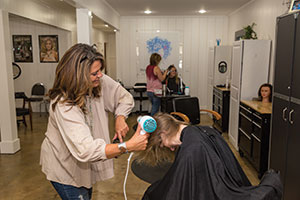 Hair. Beauty. Inspiration
Hair. Beauty. Inspiration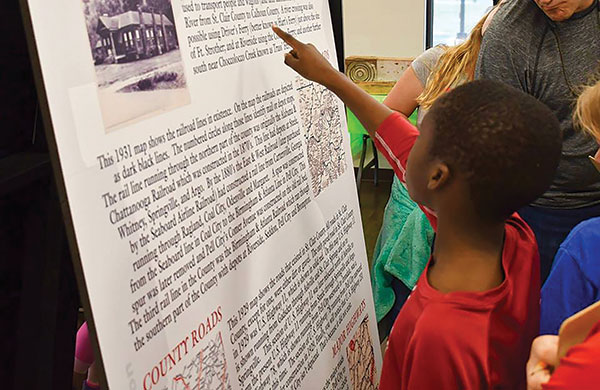
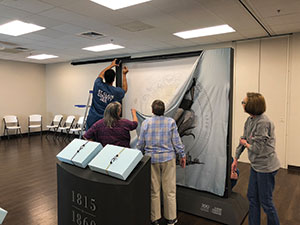 “Putting on something like this takes the efforts of several folks. Fortunately, we had a wonderful committee that volunteered a lot of hours to put this event together and be a part of it while it was exhibited,” said St. Clair County District Judge Alan Furr, who chaired the committee.
“Putting on something like this takes the efforts of several folks. Fortunately, we had a wonderful committee that volunteered a lot of hours to put this event together and be a part of it while it was exhibited,” said St. Clair County District Judge Alan Furr, who chaired the committee.
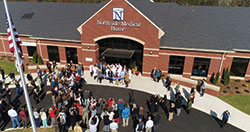 “With the number of medical-related companies and when you have that kind of synergy taking place on I-20 and US 231, it is very attractive to those investing in the medical sector. The community took a very proactive approach toward health care at a time when many rural hospitals were going out of business,” he said, noting that various entities worked together to build a replacement for its aging, outdated facility.
“With the number of medical-related companies and when you have that kind of synergy taking place on I-20 and US 231, it is very attractive to those investing in the medical sector. The community took a very proactive approach toward health care at a time when many rural hospitals were going out of business,” he said, noting that various entities worked together to build a replacement for its aging, outdated facility.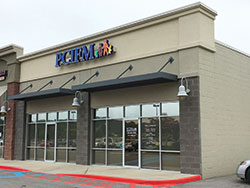 And the quality of life has definitely benefitted. People looking to retire and settle into an area look at the quality of medical services available.
And the quality of life has definitely benefitted. People looking to retire and settle into an area look at the quality of medical services available.

 “People come in and have done a lot of research on the Internet, seen rings online, Facebook, Pinterest or other sites. They might want something in a modern style, but we are seeing just as many customers looking for a vintage style, maybe art deco. We have styles from many different genres. You are not stuck with cookie-cutter designs.”
“People come in and have done a lot of research on the Internet, seen rings online, Facebook, Pinterest or other sites. They might want something in a modern style, but we are seeing just as many customers looking for a vintage style, maybe art deco. We have styles from many different genres. You are not stuck with cookie-cutter designs.”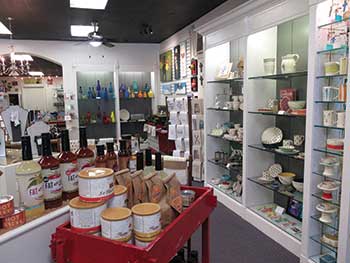 “I would get good basic pieces that you would love and use. …Get good pieces that you can grow with and that you like — creating a foundation that you will grow with,” she said.
“I would get good basic pieces that you would love and use. …Get good pieces that you can grow with and that you like — creating a foundation that you will grow with,” she said.